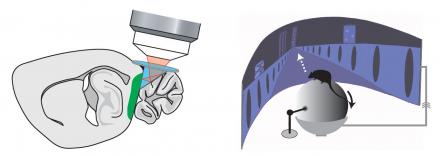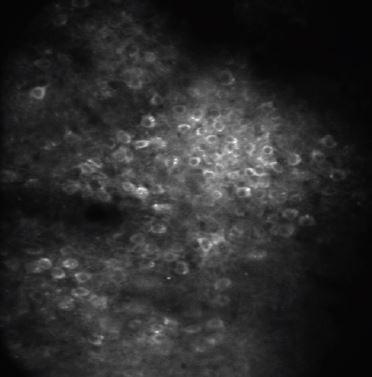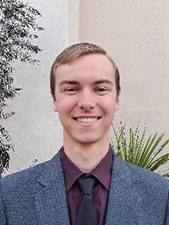
BG 35 RM 1C-1004
35 CONVENT DR
BETHESDA MD 20814
Dr. Gu received her B.S. and M.S. degrees from Tsinghua University, and Ph.D. degree from Johns Hopkins University. Her Ph.D. work in Dr. Richard Huganir’s laboratory was focused on the molecular and cellular regulation of neurotransmitter receptor trafficking. Dr. Gu was trained as a postdoctoral fellow in the laboratory of Dr. David Tank at Princeton University, where she investigated the functional mechanism of the medial entorhinal cortex during spatial navigation by combining in vivo imaging with virtual reality behavioral paradigms. Dr. Gu joined NINDS as an investigator in 2019. Her research aims to understand the neural basis of spatial navigation and memory.
Our research is focused on the neural basis of spatial navigation and memory, with the ultimate goal to uncover the fundamental principle of spatial cognition and the cause of related neurological disorders.
We are primarily interested in the medial entorhinal cortex (MEC), which plays a key role in spatial representation and episodic memory. The MEC is a part of medial temporal lobe and serves as the main gateway between the hippocampal formation and the neocortex. Many functional cell types, including grid cells, head-direction cells, border cells, speed cells, and object vector cells, have been discovered in the MEC and their activity patterns potentially represent spatial and self-motion information during navigation. Dysfunction of the MEC is closely associated with Alzheimer’s Disease (AD), the most common form of dementia. AD patients generally exhibit severe loss of episodic memory and have difficulty in spatial navigation.
Projects in the laboratory are centered around the following questions:
(1) How is spatial information represented and computed in the MEC circuit?
(2) Whether and how is spatial memory encoded in the MEC?
(3) How does the MEC interact with other brain areas to perform its function?
(4) How is the physiological function of the MEC disrupted in Alzheimer’s Disease?
We mostly use mice as model organisms and our experiments integrate optical, behavioral, computational, and molecular approaches. We access the MEC at cellular and sub-cellular resolution using two-photon imaging approach when mice navigate in virtual reality environments (see figures and videos below). This experimental setting provides a great opportunity to measure and manipulate neural dynamics while controlling spatial information during the navigation. In addition, we have a long-standing interest in developing new experimental paradigms to investigate circuit and molecular mechanisms underlying the MEC neural dynamics, as well as probing the function of the MEC in broader cognitive aspects.
We are constantly recruiting talented, motivated and friendly postdoctoral candidates with experience in in vivo imaging/recording, animal behavior, data analysis, and computational modeling. We also welcome applications from graduate and undergraduate students with background in Neuroscience and related areas. Please contact Dr. Gu if you are interested in joining us! Visit the Lab Webpage.

Left: we gain cellular-resolution optical access to the MEC (green area) through a microprism, which is surgically inserted into the transverse fissure and reflects the optical path at 90o.
Right: neural dynamics of the MEC is measured when a mouse navigates in virtual reality. The mouse’s motion in a virtual environment is driven by its running on a ball.

Video 1. Mouse’s view during the navigation on the virtual reality track in Figure 2.

Video 2. Calcium dynamics of MEC neurons in Figure 3 when a mouse navigated in virtual reality.
Post-docs
Graduate Students
Post-bacs
Volunteers
Lab Manager
Collaborators
- Ila Fiete, McGovern Institute, Massachusetts Institute of Technology
- Joshua A. Gordon and David A. Kupferschmidt, Integrative Neuroscience Section, National Institute of Mental Health, National Institutes of Health
- Shen-Ju Chou, Institute of Cellular and Organismic Biology, Academia Sinica, Taipei, Taiwan, Republic of China
1) Amina A. Kinkhabwala*, Yi Gu*, Dmitriy Aronov, David W. Tank (2020)
Visual cue-related activity of cells in the medial entorhinal cortex during navigation in virtual reality, Elife, 2020 Mar 9;9. pii: e43140., doi: 10.7554/eLife.43140. (* Equal contribution)
2) Yi Gu, Sam Lewallen, Amina A. Kinkhabwala, Cristina Domnisoru, Kijung Yoon, Jeffrey L Gauthier, Ila R. Fiete, David W. Tank (2018)
A map-like micro-organization of grid cells of the medial entorhinal cortex, Cell, 175(3), 736-750
3) Yi Gu, Shu-Ling Chiu, Pei-Hsun Wu, Bian Liu, Michael Delannoy, Da-Ting Lin, Denis Wirtz, and Richard L. Huganir (2016)
Differential vesicular sorting of AMPA and GABAA receptors, Proceedings of the National Academy of Sciences, 113(7):E922-31
4) Yi Gu, Richard L. Huganir (2016)
Identification of the SNARE complex mediating the exocytosis of NMDA receptors, Proceedings of the National Academy of Sciences, 113(43): 12280-12285
5) Ryan J. Low*, Yi Gu*, and David W. Tank (2015)
Cellular resolution optical access to brain regions in fissures: Imaging medial prefrontal cortex and grid cells in entorhinal cortex, Proceedings of the National Academy of Sciences, 111(52):18739-18744, (* Equal contribution)








